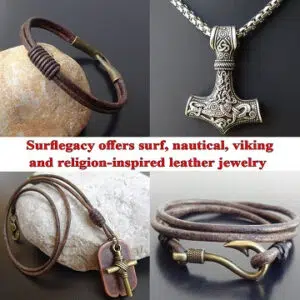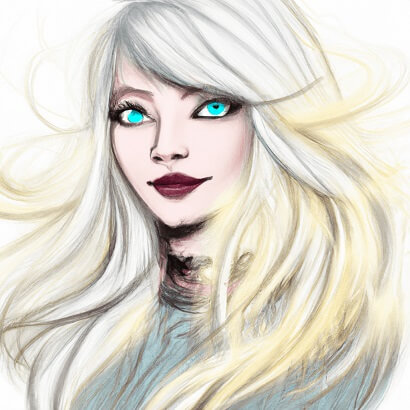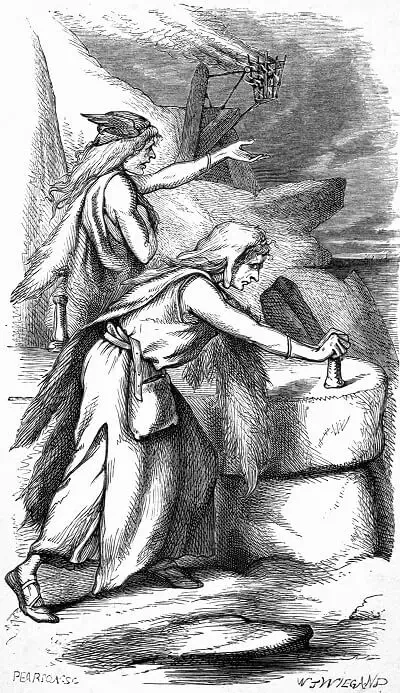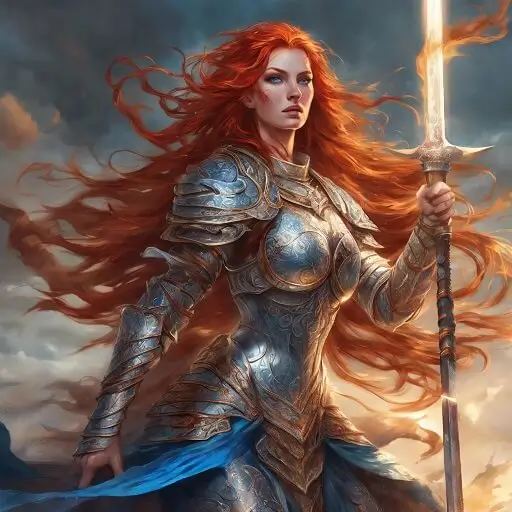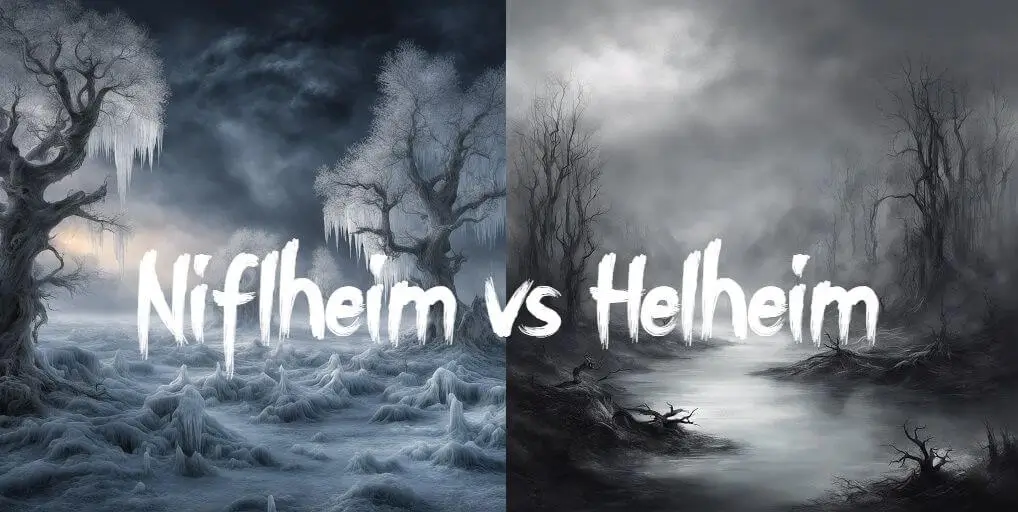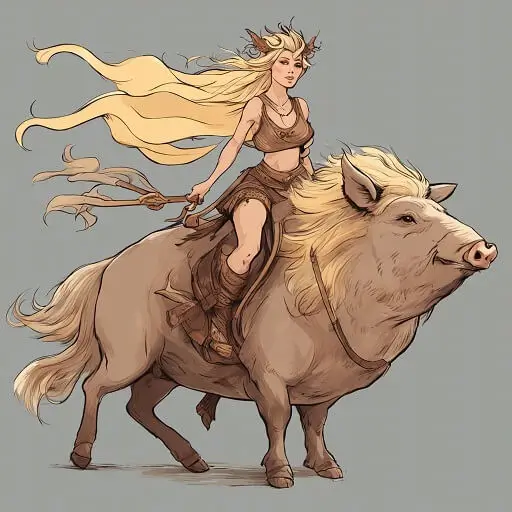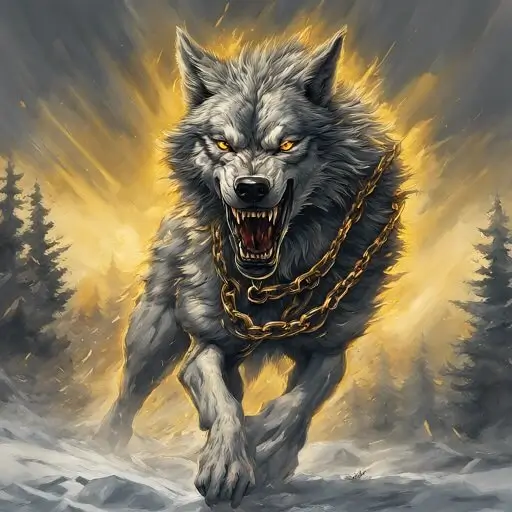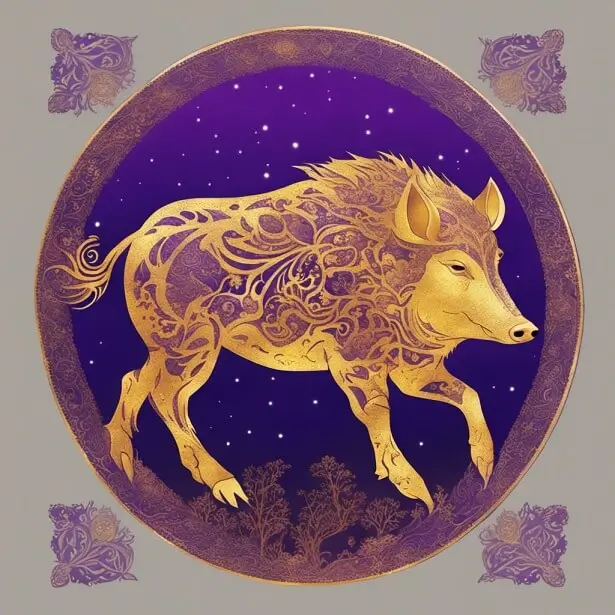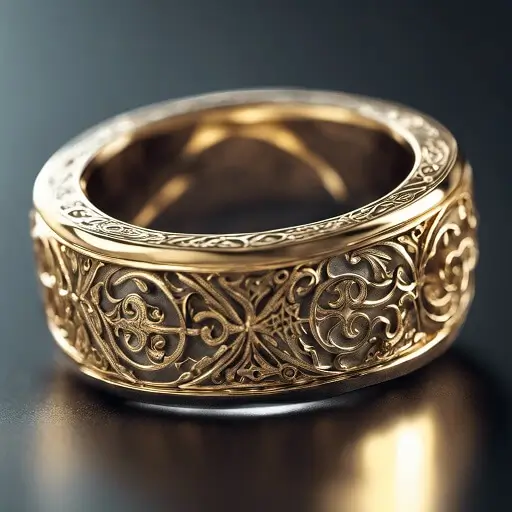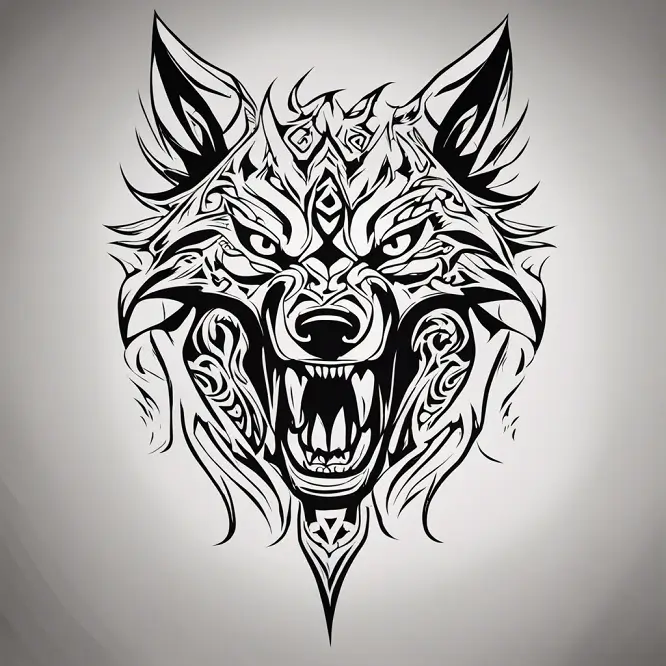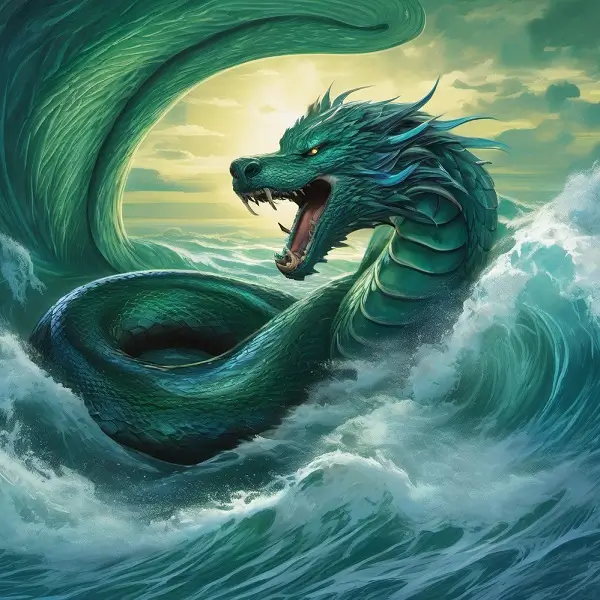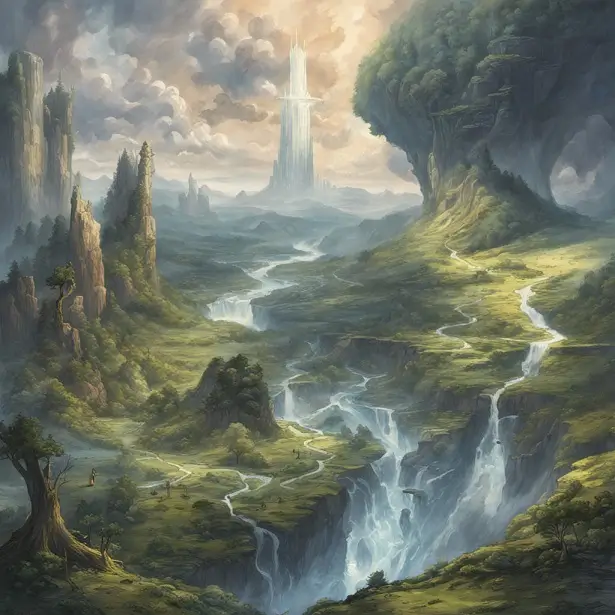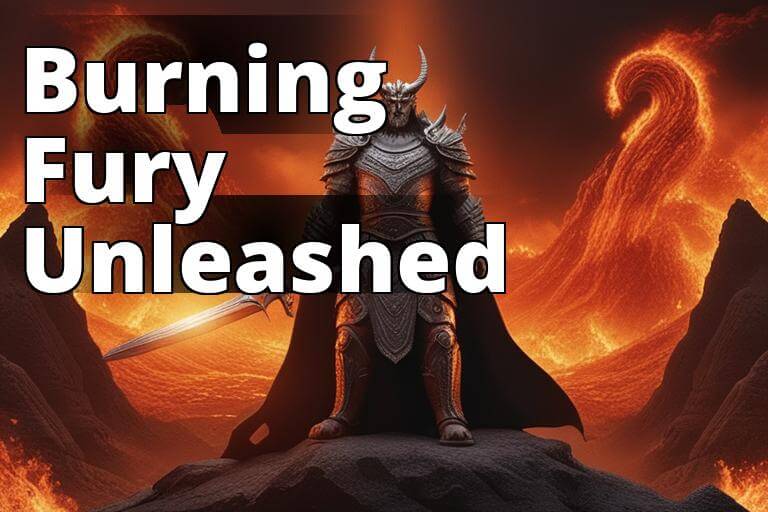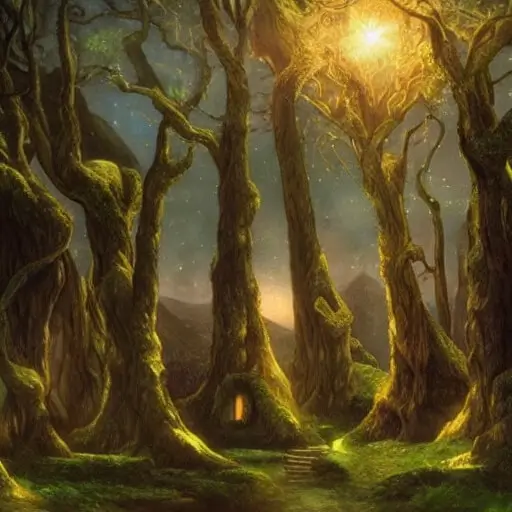The forests and wilderness of Scandinavia and Germany are home to many mystical creatures in folklore and mythology. Among the most well-known are the Huldra (also known as the Hulder)—beautiful, blonde forest spirits who seduce young men and lead them astray.
With origins dating back to pagan times, tales of the Huldra have evolved over centuries, incorporating Christian elements as the religion spread through northern Europe. Let’s explore the history, legends, and meaning behind these alluring spirits of the wild.
What Are Huldra?
Huldra (or Hulder) are supernatural women found in Scandinavian and German folklore who inhabit remote forests and wilderness areas. Their name comes from old Norse words meaning “covered” or “secret”, likely referencing their hidden or obscure nature.
In Norwegian lore specifically, “Huldra” refers to these creatures in general, though folktales presume there are many. Other names include “Skogsrå” (forest spirit) in Swedish tales, “Tallemaja” (pine tree Mary), and “Ulda” in Sámi legends.
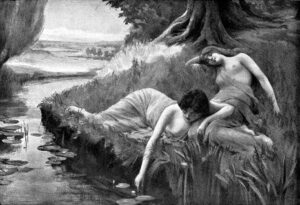
Huldra’s Nymphs” (1909) by Bernard Evans Ward
Male versions called “Huldrekall” also exist in some Norwegian stories. However, they are considered an entirely different type of being – hideous troglodytes rather than alluring beauties.
Pagan Origins as Forest Spirits
Most Norse folklore depicts Huldra as types of “rå” – spirits who act as nature’s guardians or wardens. This associates them with other mythological creatures like the Sjörå (water spirits) and Mermaids.
As such, the Huldra predate Christianity in Scandinavia and were part of pagan traditions. They were not originally considered evil, rather important entities who inhabited and protected the deep forests.
Huldra in Christian Context
With the arrival of Christianity in Scandinavia and Germany beginning around the 10th century, the perception and depiction of the Huldra shifted to align with the new belief system. Though originally neutral pagan spirits, they became recast as demonic entities and minions of the devil.
Folklore began to portray the Huldra as fallen creatures whose purpose was to lead righteous men astray through wanton sexuality and hedonism. Temptation by the Huldra represented the threat of sin and moving down an ungodly path.
Some tales even trace the origins of the Huldra back to Adam and Eve. According to these parables, when God once came to visit Eve, she had only washed half her children and hid the dirty ones out of shame. Upon seeing this, God proclaimed:
“What you hide from me, I will hide from mankind.”
The children Eve concealed were thenceforth banished from human knowledge and became the first Huldra – living in the wilds, hidden from civilized society. This aimed to explain the Huldra’s obscure origins while incorporating Christian concepts of original sin.
So in the Christianized folklore, the Huldra took on the role of demons who tempted mortals into lust, depravity, and betrayal of their faith. Their seductive powers posed a spiritual threat by encouraging sinful behavior.
While pagan tales had viewed them as mysterious forest guardians, Christian versions recast them as instruments of evil who imperiled men’s righteousness.
Appearance and Features
Despite variations, most folklore agrees Huldra appear as stunning fair-haired maidens wandering near settlements. They emerge from the woods, seducing lone men or boys who they come across.
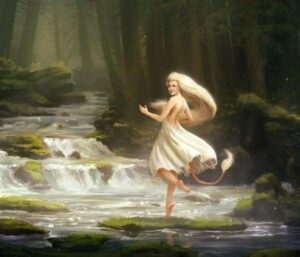
Their most distinctive feature is a cow’s tail poking out from under their robes. The Huldra try to keep their tails hidden when interacting with humans.
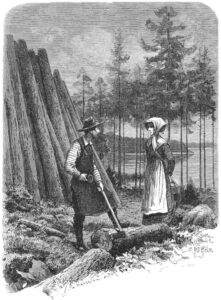
Huldra with tail talks to charcoal burner
Variations in Depictions
Just like any mythical creature, the depiction of Huldra can vary across different regions and stories. While most portrayals depict them as mesmerizingly beautiful, there are variations of the Huldra’s appearance in Scandinavian folklore.
In some tales, the Huldra is depicted as having a more ominous and sinister appearance. They may be shown with a hideous face or with animalistic traits such as large, sharp teeth, or claws. These depictions emphasize the dangerous and deceptive nature of the Huldra, highlighting their ability to lure unsuspecting humans into the depths of the forest.
Here’s a summary table of the Huldra’s physical appearance:
| Physical Features | Description | Variations |
|---|---|---|
| Appearance | Beautiful, slender figure; long, flowing golden hair; luminous eyes | Varies: some legends depict them with hideous faces or animalistic traits |
| Tail | Long cow tail, concealed to appear human | – |
| Lower Body | Human-like appearance, but may appear hollow or tree-like | – |
The allure and mystique surrounding the Huldra make them fascinating figures in Scandinavian folklore. Whether depicted as enchanting or menacing, their physical appearance contributes to their captivating presence in tales and legends.
Schemes and Powers
Good Encounters
Sometimes the Huldra are purely benign. If treated courteously, even after spotting her tail, she may reward a person with advice or good fortune.
One story tells of a boy who noticed the tail but politely said “Milady, I see your petticoat shows”. As thanks, the Huldra told him where to fish and he caught many.
Fatal Seduction
More often, the Huldra are treacherous seductresses. Their singing lures men deep into the woods where the Huldra will not let them leave until they agree to marry them.
After marrying, the Huldra turns ugly but gains immense strength. She may eventually kill her husband. Some tales have the Huldra force men to dance until they die of exhaustion.
Duality of Good and Evil
Like many mythological beings, the Huldra possesses both good and evil traits. Their intentions seem to depend on how an individual treats and respects them and their forest homes. Kindness may elicit rewards, while discourtesy prompts harsh punishments.
These tales highlight the mysterious and unpredictable nature of the Huldra. While she may seduce and lure humans into the forest, she is also capable of love and forming deep connections. The Huldra represents the duality of nature, both alluring and dangerous, captivating and unpredictable.
Connections to Witches and Magic Practitioners
The Huldra share deep connections with witches, shamans, and female magic practitioners in Norse mythology and folk legends.
Important figures such as Huld and Holda were powerful volva – prophetesses who wielded the magic of foresight. Many volva were said to practice Seiðr, a form of sorcery dominated by women which incorporated chanting, trances, and shape-shifting. Huld and Holda in particular were linked to the Huldra, hinting at an ancestral connection.
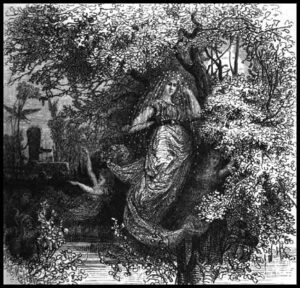
Holda – Mystical Germanic goddess of magic
The abilities of the Huldra themselves bear remarkable similarities to witches as they came to be depicted in later folklore. Their deep ties to nature, powers of seduction, and shape-shifting between beauty and beast mirrored common traits ascribed to witches across Scandinavia, Germany and beyond.
Stories of witch gatherings and sabbaths in remote forests evoke images of the Huldra dancing under the stars or seducing young men with hypnotic songs. Their inhuman attributes like cow tails presaged ideas that witches possessed animalistic familiars.
Even the hollow tree back of the Huldra may have inspired notions of witches meeting in hidden groves or around old growth trees. The Huldra’s affiliation with wild, natural places associates them with witches gathering herbs for spells or channeling earthly energies.
Through the lens of history, the Huldra was likely a pagan archetype of female power that contributed to the image of the witch as an independent, sexual, and dangerous woman living on the fringe of society. Their raw mysticality in harmony with nature exemplified traits that came to define witches in the cultural imagination.
Symbolism and Significance
The Huldra represents a multitude of meaningful concepts that have resonated through the centuries:
Wilderness
As forest dwellers, the Huldra embody the unpredictable and perilous nature of the wilderness. Their hollowed backs symbolize how the depths of the forest can appear welcoming and full of life yet remain hollow, empty, and treacherous to those who dare traverse too deep. They show the fine line between the idyllic and dangerous aspects of raw, untamed nature.
Seduction and Deception
The Huldra’s unearthly beauty and seductive charms highlight the allure and temptation of the forbidden. Their façade masks their true demonic nature, warning of the many vices dressed in appealing disguises that can lead people astray. Like the Sirens of Greek mythology, the Huldra represent how one should not judge solely by appearances.
Duality
The split nature of the Huldra – beautiful on the outside but demonic within – encapsulates the concept that surface looks can be deceiving. Good and evil, purity and sin, natural and supernatural exist in one entity, demonstrating how contradictory traits often coexist in people, spirits, and the world itself.
Feminine Power
The ability of the Huldra to control men contradicts traditional patriarchal values. Their potent sexuality and hypnotic influences show the agency and authority women are capable of wielding. Especially in the context of ancient tales, the Huldra illustrated female empowerment and inversion of gender roles.
Morality
Some legends depict the Huldra as redeemable – able to attain a human soul once married in a church. This symbolizes the Christian notion of salvation through rejection of sin and base instincts. Other tales warn against disrespecting forces of nature, with the Huldra punishing those who bring harm to the forest.
Mental Health
Several myths feature men driven insane after encountering the Huldra, warning of the psychological tolls of succumbing to dark temptations or unearthly forces beyond one’s control. They show the fragility of the human mind when faced with powers greater than itself.
Relevance in Modern Culture
Direct Huldra characters are rare in modern pop culture, but related fantasy archetypes like elves and witches clearly stem from these legends.
Some books, films, and other media have featured Huldra more directly, however. This includes the 2016 Norwegian movie “Lady of the Forest”, the fantasy novel “Monarch of the Glen” by Neil Gaiman, and references in games like Year Walk.
Though not hugely prevalent today, the Huldra still influence how artists and storytellers depict mysterious, magical, and dangerous women of the wilderness. Their mix of beauty, nature, the supernatural, and hidden darkness continues to inspire fantastical imaginings.
Huldra – Frequently Asked Questions
Could the Huldra transform into other creatures?
Some accounts suggest the Huldra had shape-shifting powers and could take on animal forms like owls or foxes. Their cow tails also hint at an animalistic aspect. However, details vary across different tales.
Were the Huldra immortal?
Their lifespan is never explicitly defined in the legends. However, as supernatural beings, the Huldra were likely immortal or at least extremely long-lived.
Could you ward off or protect yourself from the Huldra?
Ancient tales recommend politeness and respect if encountering a Huldra, as well as refraining from commenting on her tail. However, as otherworldly seductresses, they seemed difficult to deter once set on luring a victim.
Did the Huldra have any weaknesses?Apart from losing her tail if married in a church, folklore does not ascribe any notable weaknesses to the Huldra. As magical entities, they did not seem vulnerable to ordinary human tools or weapons.
Were there good as well as evil Huldra?
Huldra displayed a range of morals across different tales. Some clearly meant harm, but others could be benign or even bestow blessings if treated properly. Like many fairy folk, their character depended on whim and circumstance.
Could both men and women encounter the Huldra, or only men?
Stories focus on the Huldra seducing men and boys. However, no lore suggests they exclusively targeted males. Women traveling in the forest alone were likely also at risk of crossing a Huldra’s path.
Did the Huldra act alone or did they gather in groups?
Huldra are typically solitary creatures in the legends. However, some accounts mention circles of dancing Huldra, implying they occasionally assembled. But they primarily seemed to hunt singly.
Were there tales of romance between humans and Huldra?
Stories tell of Huldra taking human husbands, though usually by magical trickery. Genuine love stories between men and Huldra appear rare, given the Huldra’s reputation for deception and ulterior motives.
Conclusion
For centuries, legends of the Huldra have brought to life the magical and perilous aspects of nature. Their stories warn against succumbing to desire and trusting solely in appearances.
While not as ubiquitous as in the past, these seductive forest spirits still capture the imagination with their tragic tales of thwarted romance and deadly consequences.
The Huldra show how folklore and myth evolves – pagan spirits reimagined over generations to embody cultural lessons and deeply held meanings.
Shop Norse Jewelry
Are passionate about Norse Mythology?
Finding the ideal piece of Norse Jewelry can be challenging and time-consuming, especially if you lack inspiration or don’t know where to look.
Surflegacy, has you covered. We have a wide range of Handmade Jewelry in various styles, shapes, colors, and materials, to accentuate your Norse spirit and look. Do not hesitate to visit our selection HERE
Whatever you wear, you’ll find the ideal trendy piece to complement your wardrobe. Our jewelry is designed to be worn every day, no matter where you go or what season is. Are you ready to step up your wardrobe game?
